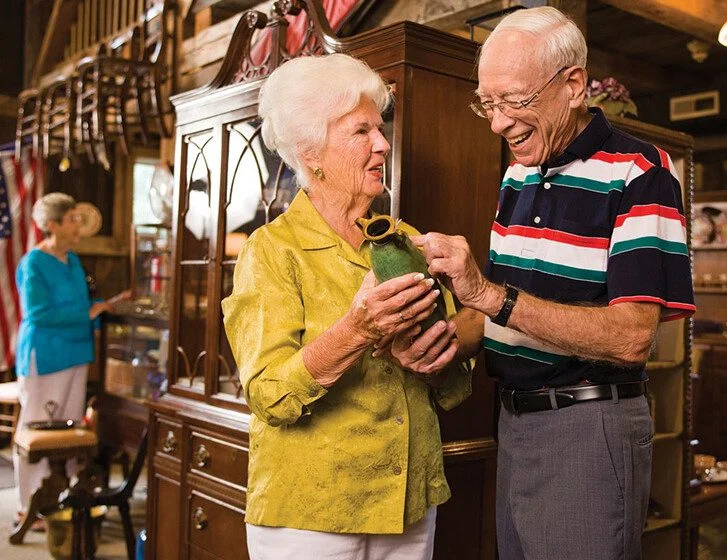Making Gifts in Your Will

Many of our supporters choose to make gifts in their wills. The advantages are undeniable. These gifts are simple, straightforward, and familiar. They are flexible in amount, form, and type of property. In addition, with a gift in your will, you retain full use of all property throughout your life, and you have the right to revoke or modify your gift if you choose.
Flexibility: Which Form Best Fits Your Needs?
You can—and should—tailor a charitable gift in your will to fit your personal circumstances and objectives by considering these four options:
- Specific gifts refer to a specific dollar amount or a specific piece of property—real estate, artwork, collectibles, etc. Specific gifts are made first before all other distributions.
- Percentage gifts designate that a percentage of the estate is to be distributed to a charity. Percentage gifts ensure that both the heirs and the charity receive proportional shares of the estate, which will increase or decrease in value over time.
- Residual gifts are gifts of any assets that remain after all other gifts, taxes, and administrative expenses have been met. This arrangement ensures that all specific bequests are satisfied and all expenses are paid first before the charity receives what is left over.
- Contingent gifts become effective when the primary beneficiary dies first or disclaims the property. While the charity’s opportunity to benefit is restricted by the contingency, this ensures that the property will not go to unintended beneficiaries.
Opportunity: Which Assets Are Best To Give?
IRD Assets
Income in respect of a decedent (IRD) is simply income earned but not received—or taxed—before death (including qualified retirement plan assets and traditional IRAs). Therefore, IRD is subject to income tax at death when it is distributed to beneficiaries. If you choose to give IRD assets to charity, the gift escapes the income tax and also qualifies for an estate tax charitable deduction. Consider naming us as the beneficiary of your IRD property and leaving other assets (those not subject to income tax) to heirs.
U.S. Savings Bonds
Making a lifetime gift of U.S. savings bonds is complicated. The Treasury Department restricts the lifetime conveyance of U.S. savings bonds (Series E, H, EE, and HH) and prohibits bond owners from naming a charity as co- owner or beneficiary.
You could cash them in and donate the proceeds, or you could have the bonds reissued to the trustee of a revocable living trust in which you are the income beneficiary and the charity is the remainder beneficiary after your death. But there’s a simpler way—making a gift of the bonds in your will.
When you give U.S. savings bonds to charity in your will, your estate is entitled to an estate tax charitable deduction. While the interest on the bonds is considered IRD and is taxable to heirs, a charity that receives the bonds will not owe any tax after redeeming them.
Charitable Lead Trusts
If you want to reduce transfer tax costs while benefiting both charitable and non-charitable beneficiaries, consider a charitable lead trust (CLT). Testamentary CLTs are irrevocable trusts that come into existence through your will and distribute income to a designated charity for a term of years or for the life of one or more individuals. At the conclusion of the term, the principal is distributed to the non-charitable beneficiaries.
Once the trust is funded, the IRS calculates the value of the remainder interest to heirs. When the trust ends, however, the assets may be worth much more than the amount originally contributed, especially if the trust has grown at a rate higher than the payout rate to charity.
Regardless of how much the assets have grown, there will be no additional tax on appreciated amounts. Thus, a CLT benefits the charity, lets you minimize or even eliminate tax on any appreciation of trust assets, and allows for a tax reduction on the value of the principle due to the gift of the charitable income interest at the end of the trust term.
ESTABLISHING A CLT BY WILL
Ruth has a significant estate. She hopes her daughter will carry on the tradition of family philanthropy with her fortune, but Ruth also wants to make certain that we receive a gift in her will. To accomplish both of her wishes, she sets up a charitable lead trust in her will with $3 million from her estate. At Ruth’s death, the trust will pay out 5% of the value of the trust to us every year for a period of ten years. During that time, we will receive a significant annual income to promote the programs Ruth valued most. Ruth’s estate will qualify for a charitable deduction, and if the assets in the trust continue to appreciate, Ruth’s daughter will receive substantially more than the original gift amount in ten years when the trust terminates.*
Charitable Remainder Trusts
Like CLTs, charitable remainder trusts (CRTs) distribute funds to both charitable and non-charitable beneficiaries while providing relief from taxes. Unlike CLTs, CRTs pay income to named beneficiaries first (for a term of years up to 20 or for life), then distribute the remainder to charity. The estate can claim an immediate estate tax charitable deduction for the present value of the remainder interest, provided the trust is a qualifying charitable remainder trust.
ESTABLISHING A CRT BY WILL
Carl wants to make a gift to us in his will. He also wants to provide for his disabled brother, John, who will need financial help with medical and caregiver expenses for the remainder of his life. Carl sets up a charitable remainder trust in his will to be funded from his estate. At Carl’s death, John will receive 5% of the value of the trust assets as revalued every year, and at John’s death, the remainder will go to us. Carl’s estate will qualify for an estate tax charitable deduction based on the present value of our charitable remainder interest.*
A Charitable Contingent Beneficiary
Estate beneficiaries may not want to accept a gift you make in your will for any number of reasons—they may be financially secure, for example, or simply unwilling to bear the costs and administrative obstacles associated with a gift of a specific property.
By making us the contingent beneficiary, your estate can qualify for an estate tax charitable deduction if your primary beneficiary makes a qualified disclaimer, giving up all rights to the gift. The property then passes to us and your estate receives the full charitable deduction for that gift.
Recording Gifts
It is important to provide us with the actual language of gifts in your will. We can review the gift instructions, making certain that your intentions are clearly stated and recorded. Equally important, it provides us with the opportunity to thank you for your generosity.
As you consider ways to support our mission, please feel free to contact us. Our experienced, professional staff can work with you and your advisors to explore rewarding ways to include a charitable gift in your will.
*All examples are for illustrative purposes only.

